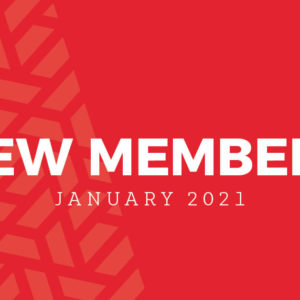Six tips to cultivate a work environment that puts employees’ physical and mental health first.
There’s no denying that 2020 completely reshaped the way we think about our workplaces and employees. Remote offices became the norm for many, video calls replaced in-person meetings, and work-life balance took on new meaning for families juggling full-time jobs and childcare. With these unexpected changes to the status quo, it’s now more important than ever to create a work environment that fosters physical and mental health—whether your employees are in an office, at home, or on a job site.
“A healthy work environment has a direct impact on employee performance,” says Lynne Jensen-Nelson, the founder, keynote speaker, and business strategist with consulting company Conversion-omics. “It improves productivity, defines employee behavior and performance, and reduces costs related to turnover, workers’ compensation, and medical claims.”
Here, Housing First Minnesota members offer tips and advice for creating a workplace that leads to healthier, happier employees.
Put employees first.
Keeping employees top-of-mind when it comes to creating a healthy work environment may seem obvious, but it goes beyond offering the basics like health insurance benefits and paid time off.
“My first and highest priority is to be a good leader for [my employees], and that doesn’t mean it’s about me; it means it’s about them. I have to know these people to give them what they need to create an environment where they can thrive,” says Jerry Olson of The Resultants, a business advisory firm.
“You want to know what they’re striving for in their personal lives, because that’s why they come to work for you—whether it’s providing for their family or accomplishing a goal.”
In a way, working from home, as so many people are right now, has made this task easier. Video calls give employers a glimpse into their employees’ personal lives, which may feature a furry “assistant” who needs to be walked, or a couple of kids wanting lunch or help with virtual schoolwork. This is the new work-life balance, and flexibility and support are necessary for an employee’s mental health. As Angela Warner, a third-generation owner and spokesperson for Warners’ Stellian, says, “There is no one-size-fits-all approach to dealing with a human being who is navigating life during a pandemic.”
Enforce safety protocols.
If you have employees working on job sites, implementing a safety program is one of the most direct ways to ensure physical health at work.
At John Kraemer & Sons, all subcontractors are presented with a “safety promise,” and if they don’t comply, they don’t get to work. Not only is this for the benefit of subcontractors’ health—there’s also a financial perk: John Kraemer & Sons’ safety director Denise Hansen estimates the builder saves an average of $70,000 on insurance costs for having a full safety program.
Create opportunities for connection.
Feeling connected to the company you work for is essential for employee mental health and morale. Despite this being “one of the biggest challenges we are facing right now” in our virtual work environment, successful business leaders are committed to keeping their teams informed and engaged, says Jensen-Nelson. “Simple changes to an internal communications strategy can have a significant and positive impact,” she adds, pointing to tools like video calls, instant messaging, email, and online conferencing platforms “to keep employees excited to be a part of the team.”
Remove the chaos.
There’s always some level of uncertainty about the future—especially in the COVID world we’re currently living in—but, as a business leader, being forthcoming about your vision and expectations improves employee mental health. “When you’re unclear about what behaviors and results are expected, that just adds to the stress. You go home wondering, ‘What did my boss think today? I don’t know. I didn’t get any feedback,’” says Olson. “All of us want to know how we’re doing. We want a scorecard; we want to know we’re making progress.”
Rethink the office space.
Our environment plays a big role in how we feel, so when and if your employees do return to a physical office space, use it as an opportunity to make some enhancements that could boost wellbeing and productivity. In a recent Fellowes Workplace Wellness Trend Report, 87% of workers were in favor of healthier workspace benefits like wellness rooms, sit-stand desks, healthy lunch options, and ergonomic seating. Small tweaks—like flexible layouts, proper lighting, greenery—can also go a long way to improve employee satisfaction.
Have fun.
When your employees receive yet another handout from human resources on the importance of wearing PPE or proper computer posture, the lessons aren’t likely to make a strong impression. Instead, encourage hands-on activities—with incentives, if possible—so your health-conscious messages pack a punch.
At Warners’ Stellian, for example, monthly challenges make staying in good physical and mental shape fun. Exercises like drinking more water, moving every day, or writing daily reflections earn employees prizes and health insurance discounts. “We have learned that you cannot be physically strong but mentally weak and succeed in any aspect of our business. That goes for the reverse as well,” says Warner. “You need both working in tandem to be truly successful at any job, from our labor teams to the sales floor and everything in between.”
To celebrate wins like good housekeeping or no injuries, Hansen will plan for a pizza party or hire a food truck to come to a job site, sometimes alongside presentations from PPE vendors such as 3M. On another occasion, she scheduled a fall-prevention outing at Vertical Endeavors Rock Climbing, highlighting the importance of properly using safety equipment. “You have to think of it as developing a culture, a new way to think,” she says. “It’s about developing relationships.”
Written by Taylor Hugo















